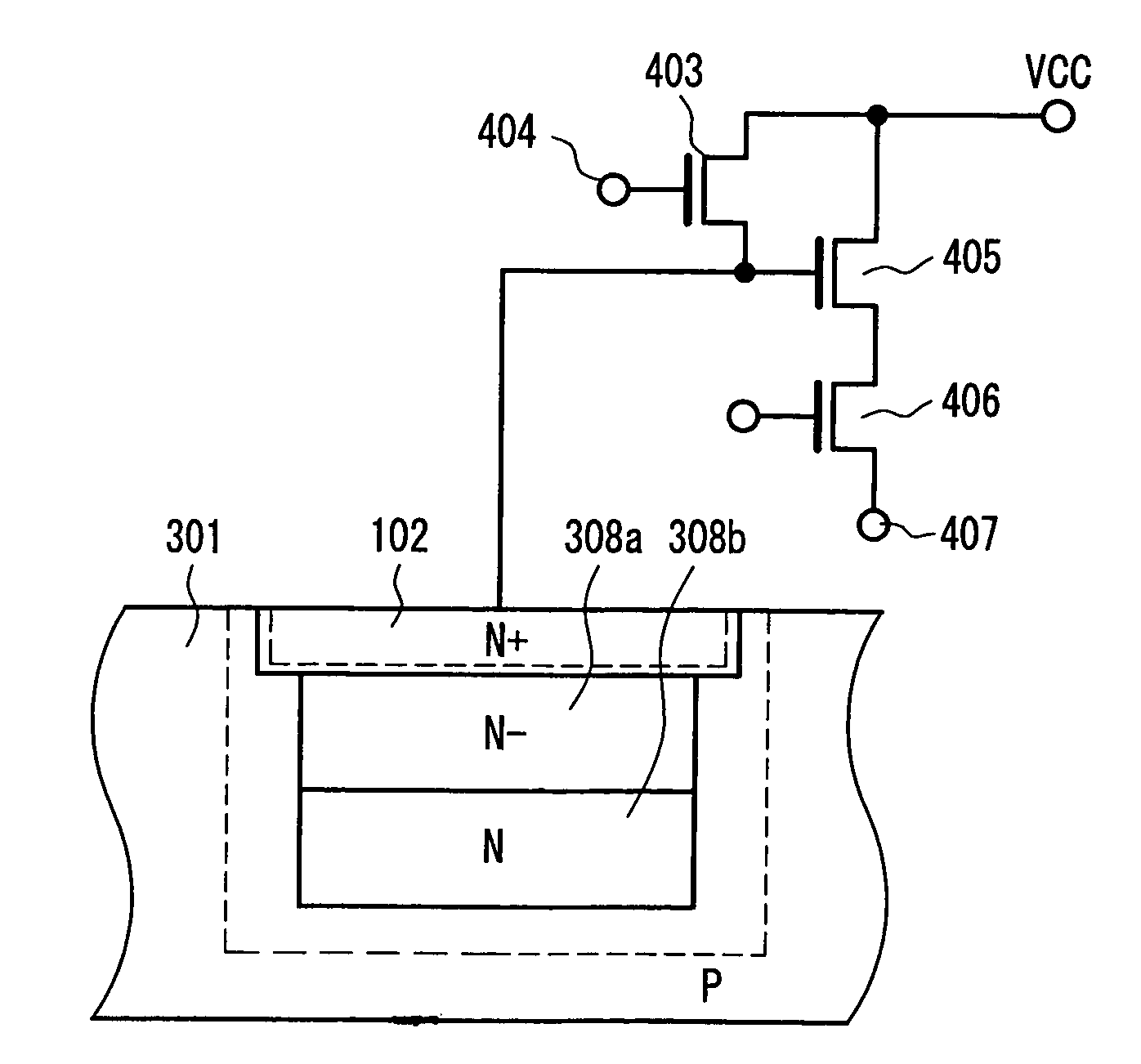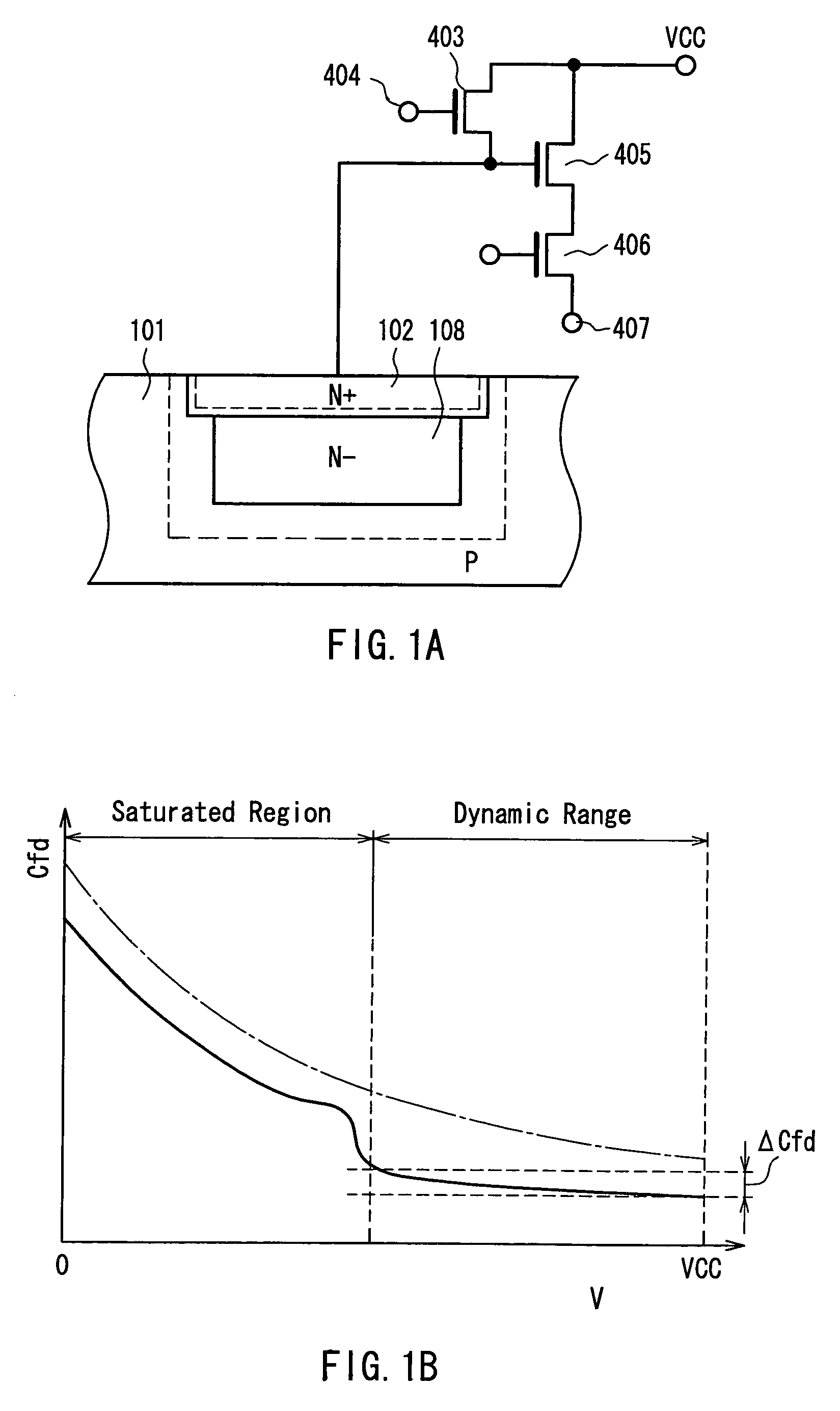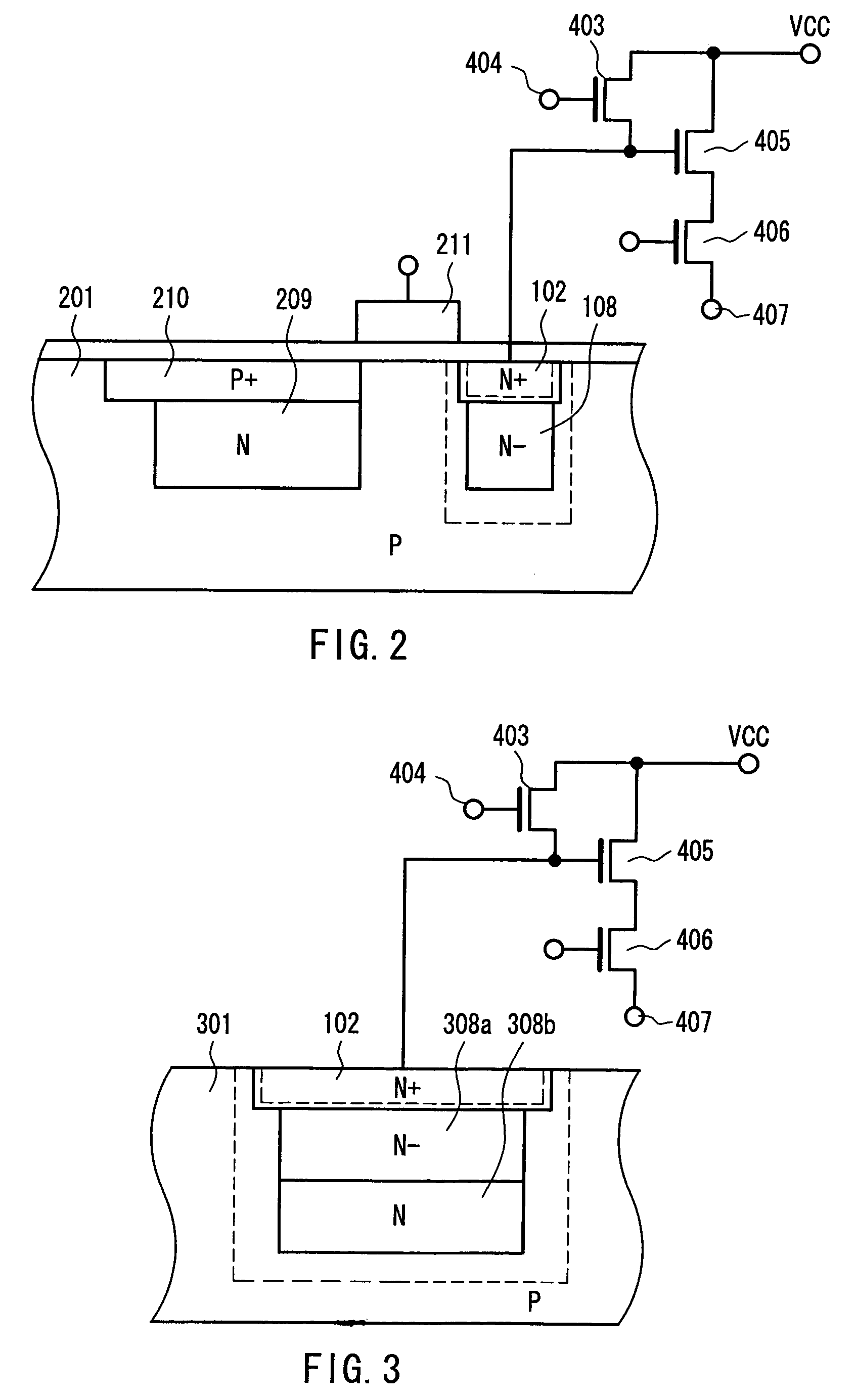Charge detecting device
a detection device and charge technology, applied in the field of charge detection devices, can solve the problems of small pixel opening ratio, difficulty in reducing a chip size, and reducing conversion efficiency (q/cfd), and achieve the effect of large dynamic range of output voltage, low cost and high efficiency
- Summary
- Abstract
- Description
- Claims
- Application Information
AI Technical Summary
Benefits of technology
Problems solved by technology
Method used
Image
Examples
example 1
[0031]FIG. 1A is a view showing a cross-sectional configuration of a semiconductor of a photoelectric converter and a configuration of an output circuit in a charge detecting device according to Example 1 of the present invention. In FIG. 1A, portions having the same configurations and functions as those in FIG. 4A referred to in the description of the conventional example are denoted with the same reference numerals as those therein, and their description will be omitted here. In FIG. 1A, broken lines represent the ends of a depletion layer.
[0032]The photoelectric converter is configured in such a manner that an N-layer 108 of a photodiode is formed on a P-type semiconductor substrate (or a P-type well) 101, and an N-layer 102 of the photodiode is formed on the N-layer 108 so that the surface has a high impurity concentration. The photoelectric converter also functions as a diffusion floating region that also works as a charge accumulating portion. The photoelectric converter is co...
example 2
[0044]FIG. 2 shows a cross-sectional configuration of a semiconductor and a configuration of an output circuit in the case where the charge detecting device of Example 1 is applied to a CCD sensor as a solid-state imaging apparatus according to Example 2 of the present invention. In FIG. 2, the portions having the same configurations and functions as those in FIG. 1A referred to in the description of Example 1 are denoted with the same reference numerals as those therein, and their description will be omitted. In FIG. 2, broken lines represent the ends of a depletion layer.
[0045]In FIG. 2, a buried-type photodiode is used, in which the surface of an N-layer 209 of a photodiode that is used generally in a CCD sensor is formed of a high concentration P-layer (P+ layer) 210. A charge / voltage converting portion with high sensitivity at a low voltage according to Example 1 is connected to an output circuit via a read gate 211 interposed therebetween. In this example, a signal charge is a...
example 3
[0046]FIG. 3 shows a cross-sectional configuration of a semiconductor and a configuration of an output circuit of a photoelectric converter in a charge detecting device according to Example 3 of the present invention. In FIG. 3, portions having the same configurations and functions as those in FIG. 1A referred to in the description of Example 1 are denoted with the same reference numerals as those therein, and their description will be omitted here. In FIG. 3, broken lines represent the ends of a depletion layer.
[0047]The present example is obtained by further improving the configuration of Example 1, and is the most important and preferable example of a low concentration N-layer region in the present invention. The low concentration N-layer region is composed of two regions. A low concentration N-layer region (N−) 308a on a surface side is formed so as to have an impurity concentration lower than that of a low concentration N-layer region (N) 308b in a deep portion. The reason for ...
PUM
 Login to View More
Login to View More Abstract
Description
Claims
Application Information
 Login to View More
Login to View More - R&D
- Intellectual Property
- Life Sciences
- Materials
- Tech Scout
- Unparalleled Data Quality
- Higher Quality Content
- 60% Fewer Hallucinations
Browse by: Latest US Patents, China's latest patents, Technical Efficacy Thesaurus, Application Domain, Technology Topic, Popular Technical Reports.
© 2025 PatSnap. All rights reserved.Legal|Privacy policy|Modern Slavery Act Transparency Statement|Sitemap|About US| Contact US: help@patsnap.com



